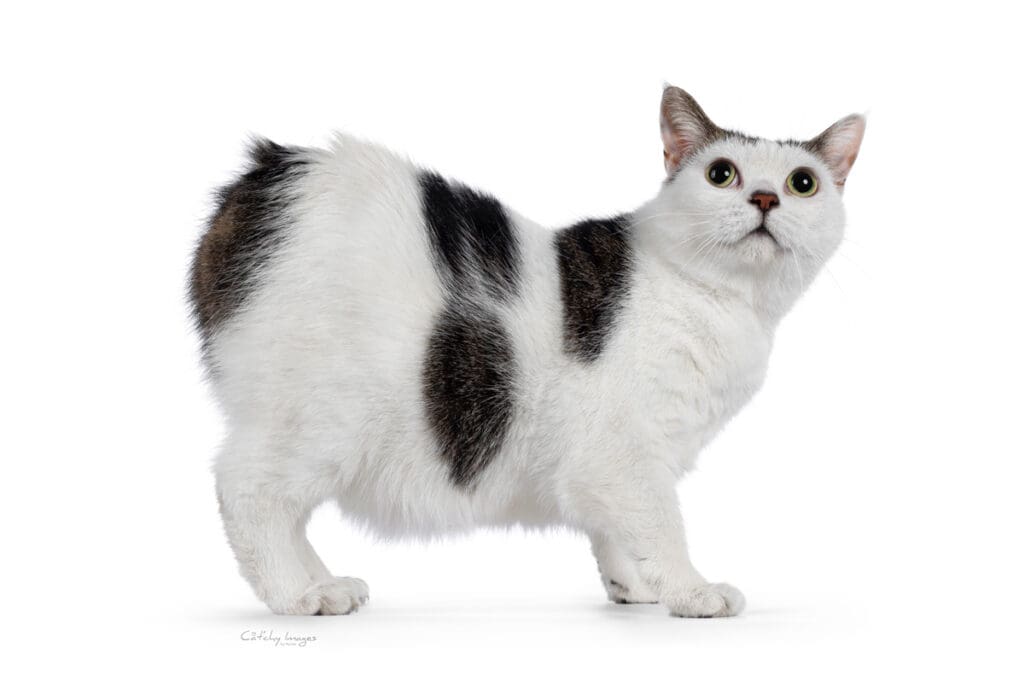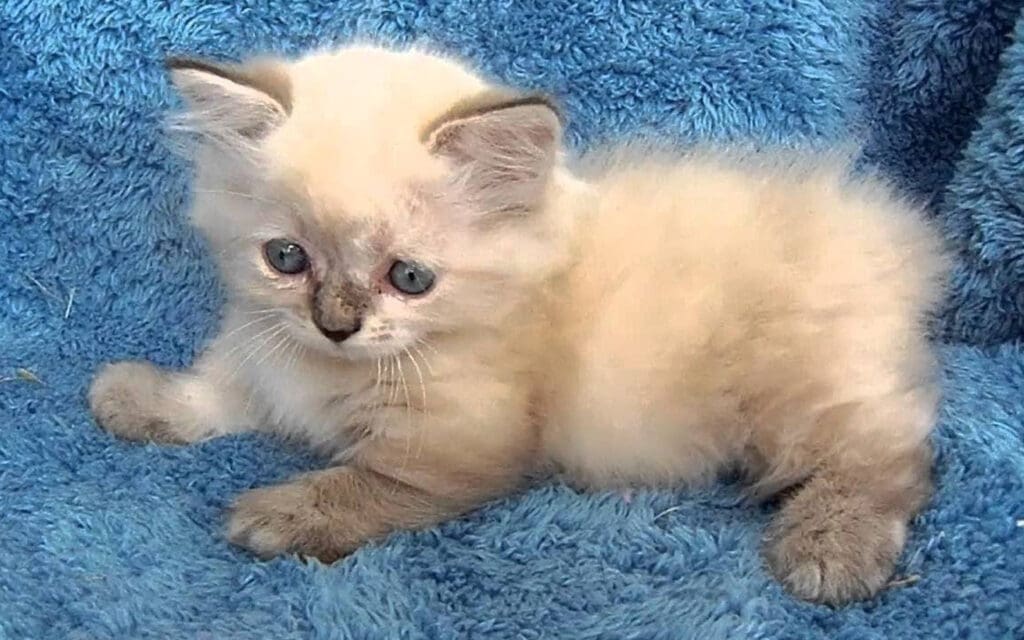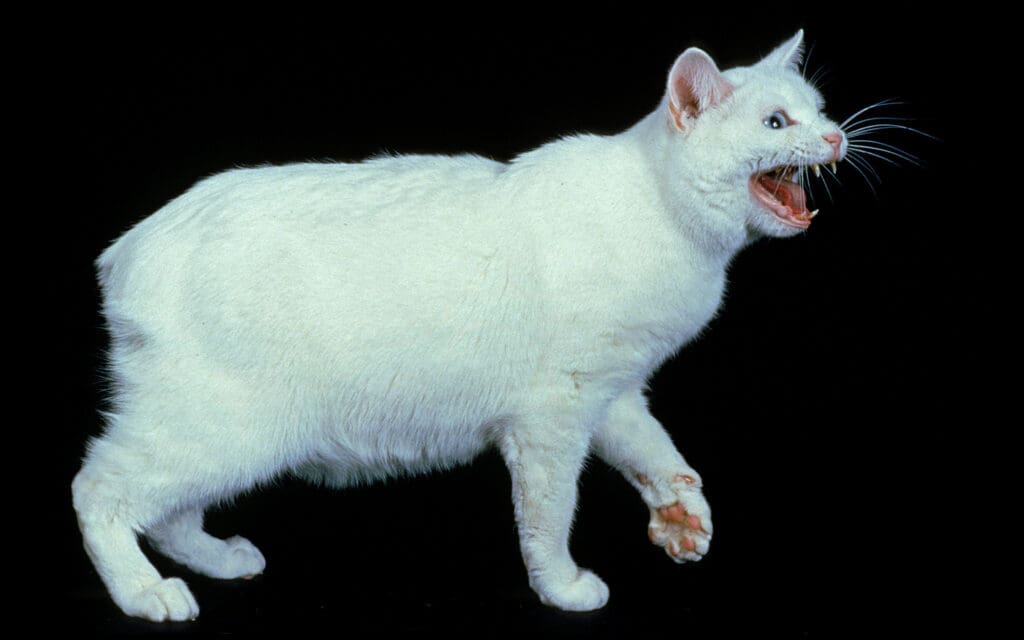The unique feature that sets Manx cats apart from other felines is its lack of a tail or the presence of a stubby one. Find out why these cats are tailless (and why some aren’t), their origin, and more incredible facts about Manx cats.
10. Manx Cats’ Missing Tail Is a Genetic Mutation

In the colloquial Manx language of the Isle of Man, where Manx cats originated, these tailless cats were called stubbin. This dominant trait of taillessness arose from a spontaneous mutation that eventually became common on the island due to its limited genetic diversity. Because the gene is so dominant, it “invades” other breeds when crossed.
9. Creative Legends About Why Manx Cats Lost Their Tails

Many creative legends seek to explain how Manx cats lost their tails. One theory was that Manx cats were actually “cabbits” — a hybrid of a cat and a rabbit. Another legend says the Manx cat was running late for Noah’s Ark, and Noah slammed the door, severing the cat’s tail.
8. Manx Cats Were One of the World’s First Show Cats

Early in the 19th century, Manx were known as cats from the Isle of Man. They’re ultimately descended from the African wildcat. Cat lovers began showcasing Manx cats at some of the world’s first cat shows in the late 19th century. When the Cat Fanciers’ Association (CFA) was formed in 1906, the Manx was one of the founding breeds.
7. Manx Cats Have Kittens With and Without Tails

Manx cats carry one gene for a normal-length tail and one for taillessness. Because the Manx gene is an incomplete dominant gene, kittens can be born with no tails, stubby tails, or full-length tails, all in a single litter. Sadly, kittens that inherit the gene for taillessness from both parents will likely die before birth. It’s called “the lethal gene.”
6. Manx Cats’ Tails Can Vary in Length

Manx cats are classified according to their tail length. Tailless Manx are called “rumpy.” Manx with short tails are called “stumpy.” Normal length-tailed Manx are called “longy.” Only Manx defined as “rumpies,” or those with a slight rise of bone where their tail would start called “rumpy risers,” are eligible to compete in championship classes at CFA cat shows.
5. Manx Cats Come in Various Eye Colors, Shades and Patterns

Manx cats come in at least 12 colors, including white, blue, black, red, green, brown, silver, chocolate, cinnamon, lilac, fawn, and smoke. They also come in at least 7 patterns including bicolor, calico, tabby, tortoiseshell, solid, patched tabby, and brown mackerel tabby. Manx cat’s eye colors come in various shades including gold, copper, green, hazel, blue, or odd-eyed.
4. Koko the Gorilla had a Manx Kitten Playmate

The famous research gorilla known as Koko, who knew more than 1000 words of modified American sign language, once had a Manx cat as a companion. For her 12th birthday in 1984, Koko was allowed to choose a pet kitten and she selected a Manx she named “All Ball,” because the cat looked like a ball.
3. Manx Cats Have Unique Health Problems

Manx cats have a unique set of health issues. The mutation that causes the cat’s lack of detail also affects the development of its spine and spinal cord. Many of these are collectively known as “Manx syndrome,” which includes the birth defect spina bifida. They’re also prone to partial paralysis, incontinence, digestive and urinary tract problems, and more.
Read More: 10 Tips to Win Over Your Cat
2. Scientists Are Still Trying to Decode Manx Cats’ Genome

At present, no one has yet sequenced the genome of the Manx cat. In 2007, scientists at the University of Missouri released a rough draft of the cat genome. In 2014, they added a more enhanced version. Still, the complete genome remains elusive. A group of researchers on the Isle of Man have launched a project to finish the work.
Read More: 10 Things to Know Before You Foster a Cat
1. Manx Cats Can Balance Without Their Tail

A tail is essential in the daily life of a cat. They are used for balance during jumping and leaping, as well as sensory input. Cats also communicate with their tails. So how do Manx cats manage to balance without a tail? Experts believe these cats have compensated by using an especially sensitive vestibular apparatus inside their ears.
Read More: 10 Essential Things Every New Kitten Owner Should Do






